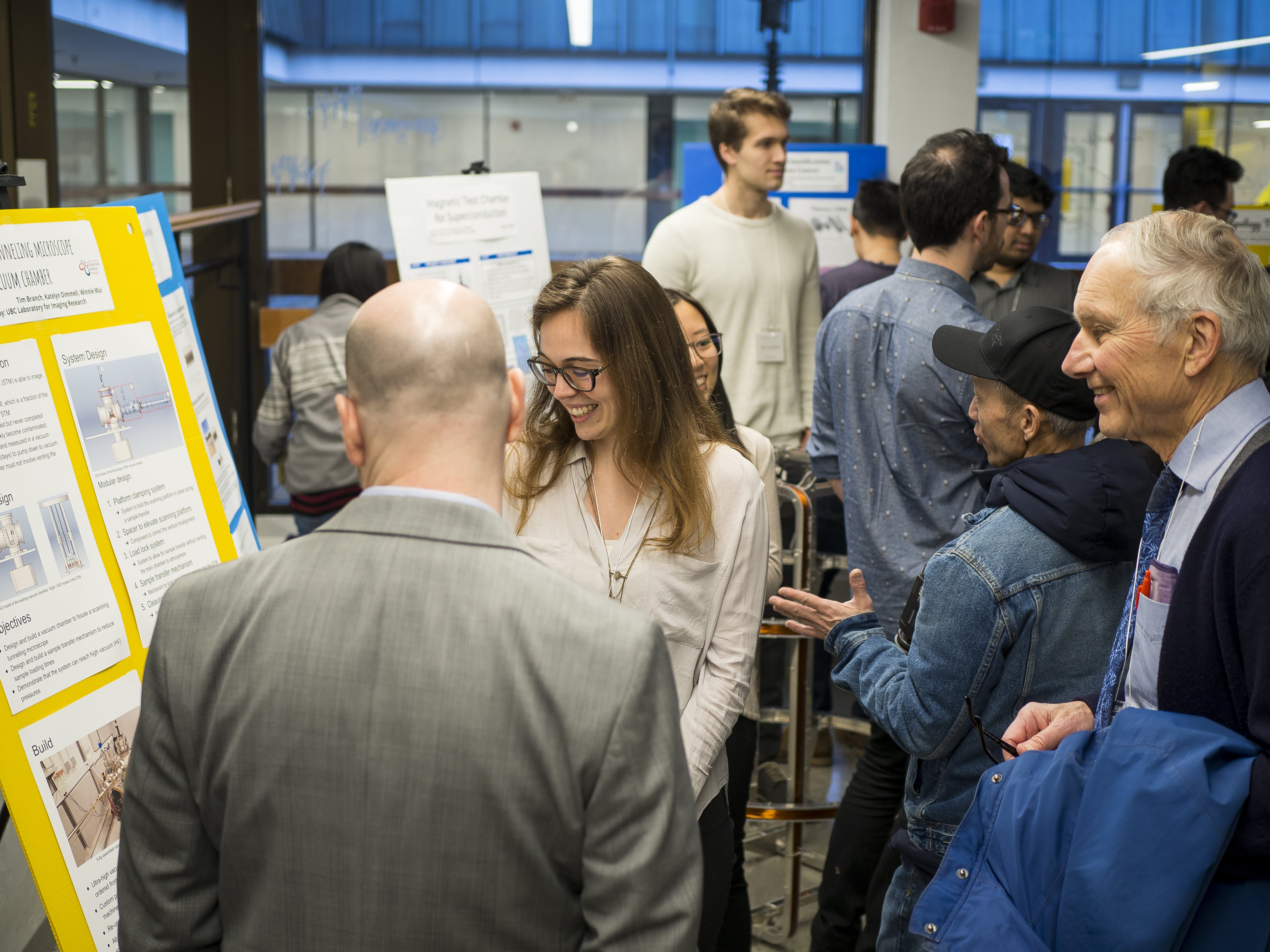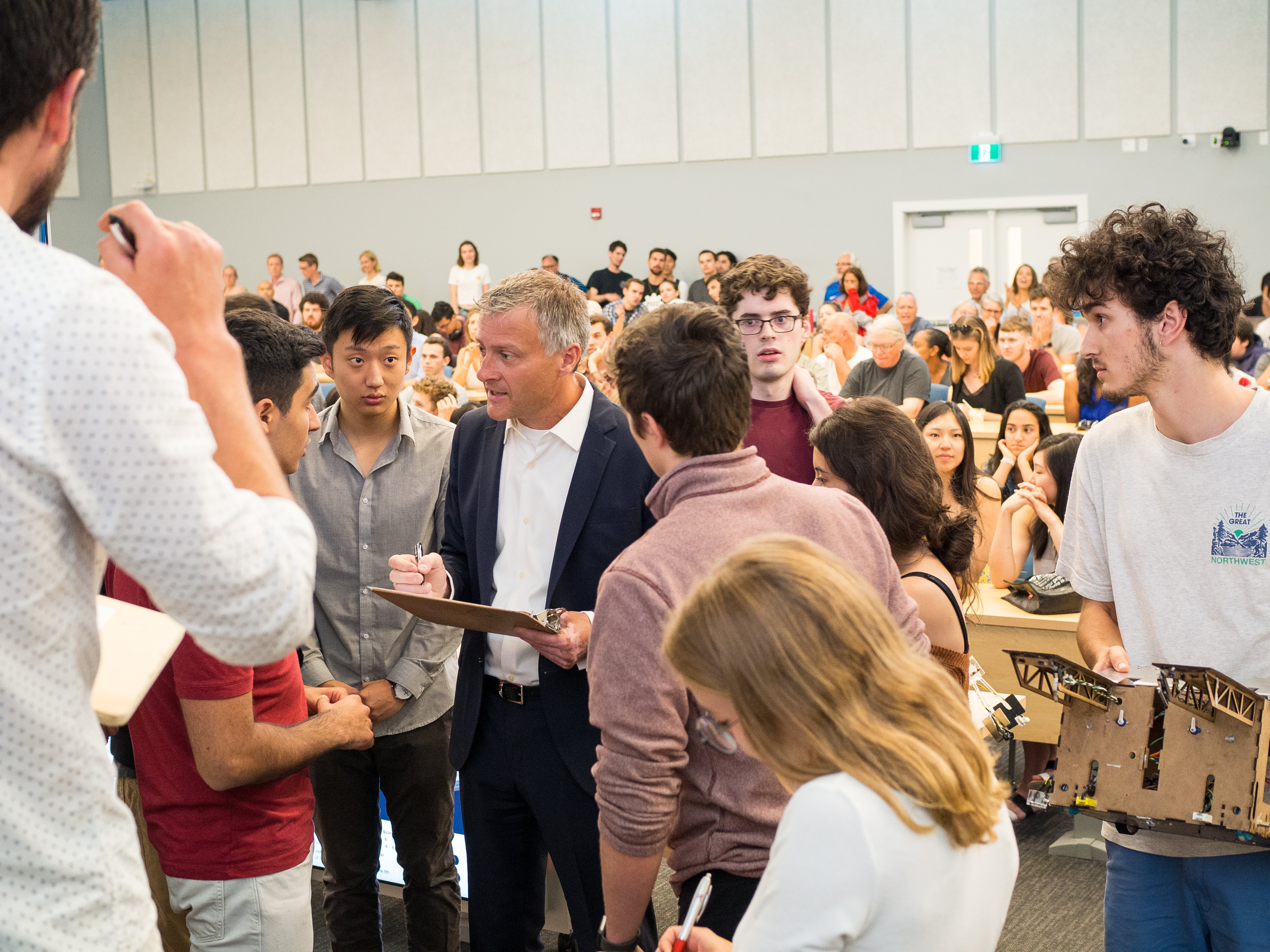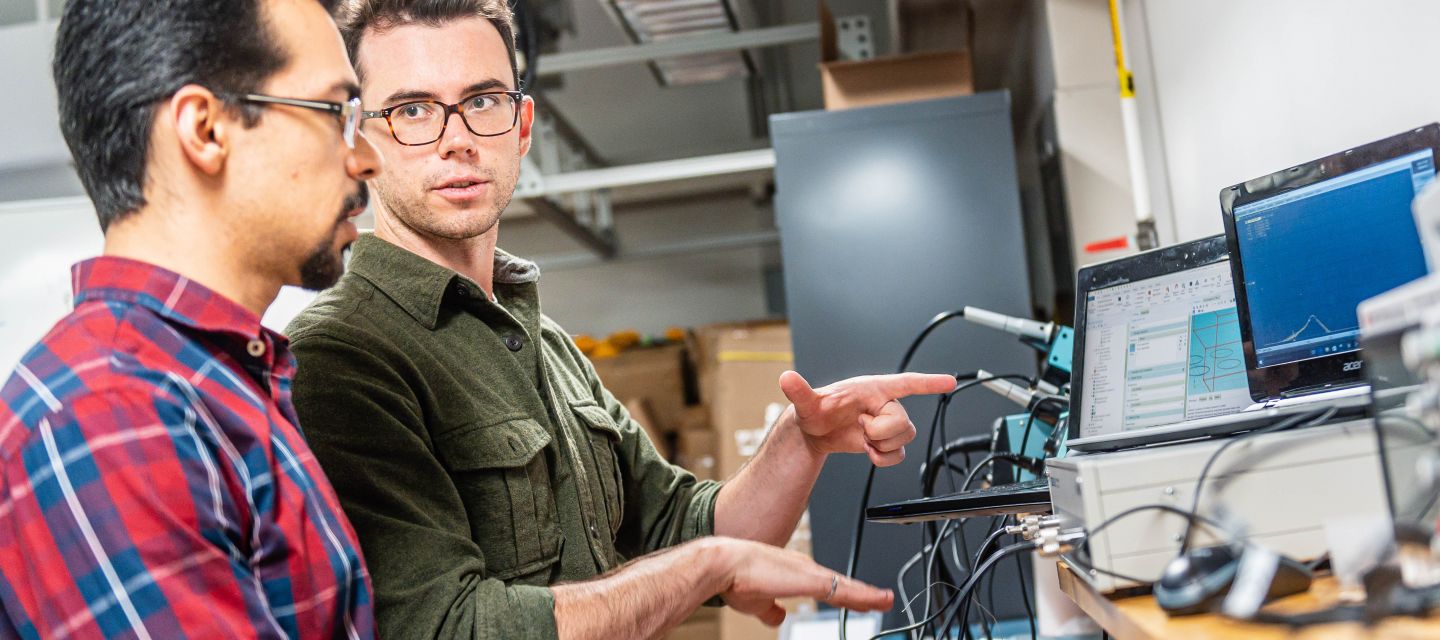Over 50 companies founded by alumni and counting; numerous life-changing inventions; and application-minded graduates that go on to become captains of industry.
Although a relatively small undergraduate program, Engineering Physics in the UBC Faculty of Applied Science punches far above its weight, and has had a disproportionately large impact on the Vancouver tech economy and beyond.
Outside of the small, tight-knit “Eng Phys” community – only 60 students are admitted each year – few people may appreciate the scale and breadth of the influence of this program. Many graduates go on to found start-ups, with alumni currently at the helm of leading west-coast companies such as AbCellera, MistyWest, Starfish Medical, and Precision Nanosystems, to name a few. Others go on to complete prestigious graduate programs across the globe or begin remarkable careers in software, medical devices, automation, quantum information, and other in-demand fields.

A few notable alumni of the program include Geof Auchinleck, ’81, serial entrepreneur in the medical device field and winner of a 2012 Manning Innovation Award for his BloodTrack Transfusion Management System; Iain Verigin, ’89, co-founder of PMC-Sierra (now Microsemi), Bjarni Tryggvason, ’72, Space Shuttle astronaut and International Test Pilot instructor; as well as more recently, Carl Hansen, ’00, CEO of AbCellera and co-founder of Precision Nanosystems; and the current Eng Phys director and Boreal Genomics co-founder, Andre Marziali, ‘89. After graduating from UBC Engineering Physics in 1989, Marziali left to complete a Ph.D. in Physics at Stanford. He eventually returned to Vancouver and UBC, motivated by the potential of the Eng Phys program and the strength of its undergraduate talent pool.

Marziali isn’t the only Eng Phys alumnus who has returned to UBC to set up companies, hold leadership positions, and mentor the next generation of brilliant innovators. Other notable faculty and Eng Phys alumni include Rob Rohling, ECE and Mechanical Engineering professor and co-founder of Sonic Incytes, as well as James Olson, Dean of Applied Science.
As Marziali points out, finding program graduates in leadership roles is no coincidence: “The success of our graduates speaks for itself—a disproportionate number of the technology executives in our community have graduated from Eng Phys. The technical breadth of the program combined with the analytical skills it develops make for great preparation for technology leadership roles.”
What is it about the Eng Phys program that fosters so many leaders and spins off so many successful start-ups?
As its name suggests, an Engineering Physics degree provides students with a unique blend of applied and theoretical knowledge. The curriculum consists of electrical and mechanical engineering, software development, extensive hands-on project experience and a strong foundation in physics, with a purpose to train engineers who can work at the forefront of technology development by conducting scientific research and readily applying it to new products.
With such a wide breadth and depth of subjects, the program is known to be one of the most academically challenging and rigorous undergraduate programs at UBC.
“Engineering Physics attracts challenge seekers,” says Marziali.
Indeed, with its rigour and reputation, Eng Phys is highly compelling to entrepreneurially-minded students who are keen to tackle thorny problems at the intersection of science, engineering, and business—and who aren’t afraid of the seemingly intractable.
“I chose UBC Engineering Physics because it would give me the theoretical foundation to work in physics research with the engineering skills to design and build my own tools and experiments,” says Andrew Cote, ’19, who took on challenging roles in applied physics research at institutions such as TRIUMF, General Fusion, and the Stanford Linear Accelerator throughout his degree. “The combination of experimental physics and engineering design has proved to be a very rewarding and challenging field to work in.” Currently, Andrew is acting as a Venture Development Specialist at entrepreneurship@UBC, supporting UBC’s Incubator and HATCH Accelerator program on campus.

The program’s strong emphasis on physics allows students to succeed across a wide breadth of challenges, not limited to what they’re taught in the classroom. Physics becomes a problem-solving tool that helps students navigate unfamiliar engineering problems and technical systems by illuminating the underlying physical principles, and also helps them succeed in the highly analytical world of business. This physics foundation also makes the program’s graduates exceptionally well-suited to working in emerging industries such as quantum information, carbon capture, and space technology.
“The most important things I have learned during my degree are not necessarily the technical details of the courses I have taken, but rather the underlying ability to pick up new skills and build on existing ones,” says Yuqing Du, ’19, whose co-op resume includes hardware and software engineering roles at Google and Tesla. She was also awarded the 2019 Governor General’s Silver Medal, one of the most prestigious awards that students in Canadian universities can receive, and will be pursuing a Ph.D. in the field of Artificial Intelligence at the University of California at Berkeley in the fall. “Being a part of Engineering Physics has taught me how to effectively break down problems from a variety of different fields.”

Additionally, beyond teaching engineering and physics, the program also emphasizes the development of invaluable leadership, management and communication skills. At the end of their degrees, this challenging yet highly engaging environment will have enabled students to not only develop keen technical skills, but also business and problem-solving acumen, leadership, compassion, and a fluency for big-picture thinking—all key ingredients in the creation of innovative and bold new tech companies.
“One of the biggest skills [I’ve developed is] an eye for the ‘big picture’—what is this project for, who does it help and why should we care?—and using that to generate design requirements and inform technical decision-making,” says Cote. “As engineers I think we need to be aware of the social impact of our design decisions have and empathize with who will use and be affected by the things we develop. Otherwise you’re just building Death Stars—cool science, but mighty un-neighbourly.”
{"preview_thumbnail":"/sites/default/files/styles/video_embed_wysiwyg_preview/public/video_thumbnails/N52FwTVnIlI.jpg?itok=jwHw4379","video_url":"https://www.youtube.com/watch?v=N52FwTVnIlI","settings":{"responsive":1,"width":"854","height":"480","autoplay":0},"settings_summary":["Embedded Video (Responsive)."]}
One exciting example of the program’s highly challenging yet engaging environment is the second-year course, Introduction to Instrument Design—also known as the Engineering Physics Robot Competition, during which students spend the summer building autonomous robots in teams of four. The course culminates in a public competition in which their completed robots battle each other for the top spot, as well as for peer adoration.

Bolstering Impact with Innovation UBC
Many new ventures coming out of Engineering Physics are become part of entrepreneurship@UBC’s HATCH Accelerator program, UBC’s start-up accelerator for technology-based ventures dedicated to maximizing the number of successful startups coming out of UBC campus. The program also directly contributes to the Innovation UBC network through Venture Development Specialist student internships at the HATCH Accelerator. Engineering Physics students are currently acting as consultants to the various companies in residence in the HATCH Accelerator, lending their technical expertise and helping to develop new groundbreaking technologies.
Given Engineering Physics' already highly-impressive track record for fostering brilliant talent and spinning off innovative companies, the Innovation UBC network can help even further bolster its reach, accelerating the pace of transformation from brilliant ideas to incredible impacts.
Andre Marziali, Director of Engineering Physics: “The success of our graduates speaks for itself—a disproportionate number of the technology executives in our community have graduated from Eng Phys. The technical breadth of the program combined with the analytical skills it develops make for great preparation for technology leadership roles.”
Featured Companies started by Engineering Physics Alumni
Iris Automation
Alexander Harmsen, Class of 2015
Iris Automation is building a visual based collision avoidance system to enable drones to see the world as pilots see it, while being able to fly Beyond Visual Line of Sight.
ReDeTec
Dennon Oosterman, Class of 2015
ReDeTec has created patented technology to recycle plastic waste. The first use of this technology is the company's 3D printing recycling system called ProtoCycler.
Arbutus Medical
Marianne Black, Class of 2012
Arbutus Medical has created a reusable drill cover that provides a sterile environment for surgeries in resource-constrained settings.
MistyWest
Leigh Christie and Josh Usher, Class of 2004
MistyWest is a multidisciplinary engineering consultancy specializing in prototyping and early stage product development.
Precision Nanosystems
James Taylor, Class of 2002
Precision NanoSystems Inc. (PNI) creates innovative solutions that empower researchers to harness powerful nanotechnology to transform our understanding and treatment of diseases.
AbCellera
Carl Hansen, Class of 2000
AbCellera is a world-leading innovator in antibody discovery for therapeutics, and immune profiling for vaccine research.
Sonic Incytes
Rob Rohling, Class of 1991
Sonic Incytes is a medical device start-up company developing quantitative ultrasound for point-of-care diagnostic and procedure guidance.
Boreal Genomics
Andre Marziali, Class of 1989. Also David Broemeling, Joel Pel, Jason Thompson, Dylan Gunn, Peter Eugster.
At Boreal, we are committed to improving cancer patient care through development of research tools and diagnostic tests based on monitoring of circulating tumor DNA in plasma.
Starfish Medical
Scott Philips, Class of 1989
StarFish Medical is Canada’s largest medical device design, development and contract manufacturing company. We help medtech innovators throughout North America overcome challenging technology obstacles to create breakthrough products that improve health and save lives.
Microsemi (formerly PMC Sierra)
Iain Verigin, Class of 1989
Microsemi Corporation offers a comprehensive portfolio of semiconductor and system solutions for communications, defense & security, aerospace and industrial markets.
